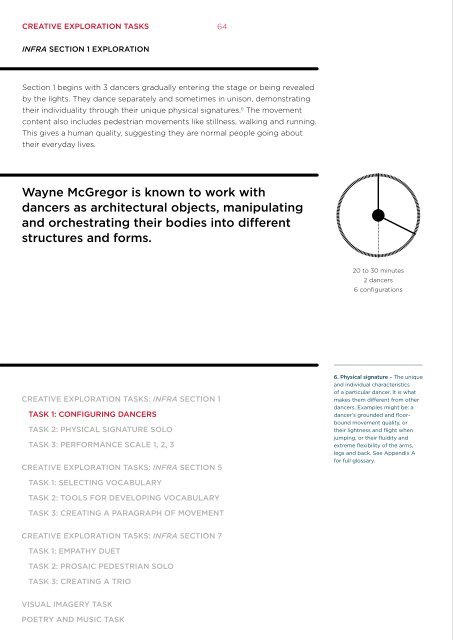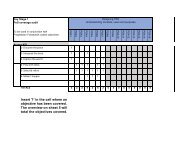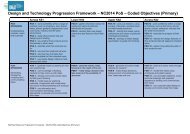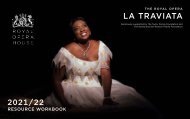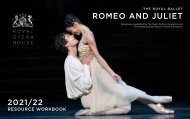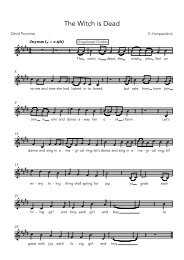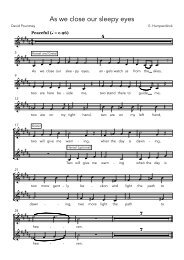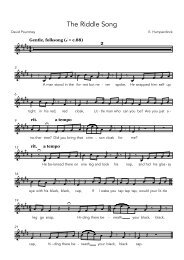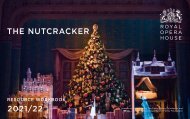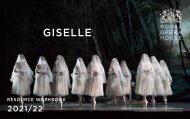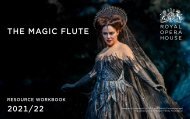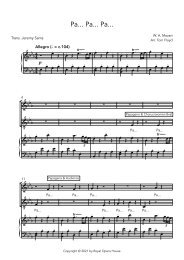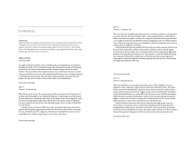Infra E-resource pack 2018
You also want an ePaper? Increase the reach of your titles
YUMPU automatically turns print PDFs into web optimized ePapers that Google loves.
CREATIVE EXPLORATION TASKS<br />
64<br />
INFRA SECTION 1 EXPLORATION<br />
Section 1 begins with 3 dancers gradually entering the stage or being revealed<br />
by the lights. They dance separately and sometimes in unison, demonstrating<br />
their individuality through their unique physical signatures. 6 The movement<br />
content also includes pedestrian movements like stillness, walking and running.<br />
This gives a human quality, suggesting they are normal people going about<br />
their everyday lives.<br />
Wayne McGregor is known to work with<br />
dancers as architectural objects, manipulating<br />
and orchestrating their bodies into different<br />
structures and forms.<br />
Working in pairs, label yourself ‘Dancer’ and ‘Choreographer’<br />
a The dancer stands in a neutral position and the choreographer touches<br />
a part of the dancer’s body as if they are connecting a thread to that area.<br />
The choreographer then pulls the imaginary thread moving and directing<br />
that body part, plotting it to a point in the space around the dancer.<br />
The dancer must always follow the direction of the imaginary thread<br />
(choreographer’s hand) leading with that specific body part. They may<br />
need to transfer weight, twist and include other body parts to allow this<br />
to happen, but they should not travel too far in the space.<br />
20 to 30 minutes<br />
2 dancers<br />
6 configurations<br />
Fig 1:<br />
Choreographer touches a part<br />
of the dancer’s body, and pulls<br />
an imaginary thread, leading<br />
that specific body part.<br />
Fig 2:<br />
Dancer stores the shape created<br />
in their mind and muscle memory<br />
b When happy with the position, the choreographer releases the thread and<br />
the dancer stores that shape or position in their mind and muscle memory.<br />
CREATIVE EXPLORATION TASKS: INFRA SECTION 1<br />
TASK 1: CONFIGURING DANCERS<br />
TASK 2: PHYSICAL SIGNATURE SOLO<br />
TASK 3: PERFORMANCE SCALE 1, 2, 3<br />
CREATIVE EXPLORATION TASKS: INFRA SECTION 5<br />
TASK 1: SELECTING VOCABULARY<br />
TASK 2: TOOLS FOR DEVELOPING VOCABULARY<br />
TASK 3: CREATING A PARAGRAPH OF MOVEMENT<br />
CREATIVE EXPLORATION TASKS: INFRA SECTION 7<br />
TASK 1: EMPATHY DUET<br />
TASK 2: PROSAIC PEDESTRIAN SOLO<br />
TASK 3: CREATING A TRIO<br />
6. Physical signature – The unique<br />
and individual characteristics<br />
of a particular dancer. It is what<br />
makes them different from other<br />
dancers. Examples might be: a<br />
dancer’s grounded and floorbound<br />
movement quality, or<br />
their lightness and flight when<br />
jumping, or their fluidity and<br />
extreme flexibility of the arms,<br />
legs and back. See Appendix A<br />
for full glossary.<br />
The choreographer can adjust other body parts (maximum of 3) in order to<br />
refine the shape (either verbally or with the imaginary thread) considering<br />
different levels and the space around the dancer. This is configuration 1.<br />
c Repeat the manipulation to get to configuration 1 and this time focus on<br />
the length of thread and air pathway of the body part:<br />
+ + When the thread is shorter, is the length of movement shorter and more<br />
articulate? Is the pathway more direct?<br />
+ + When the thread is longer, is the movement more elongated and fluid?<br />
What is the air pathway like?<br />
Both choreographer and dancer should experiment with this and together<br />
set the dynamic and air pathway of the movement to get to configuration 1.<br />
The choreographer repeats this process six times, creating six configurations.<br />
Each new manipulation must start from the previous stored configuration.<br />
Swap roles.<br />
VISUAL IMAGERY TASK<br />
POETRY AND MUSIC TASK


